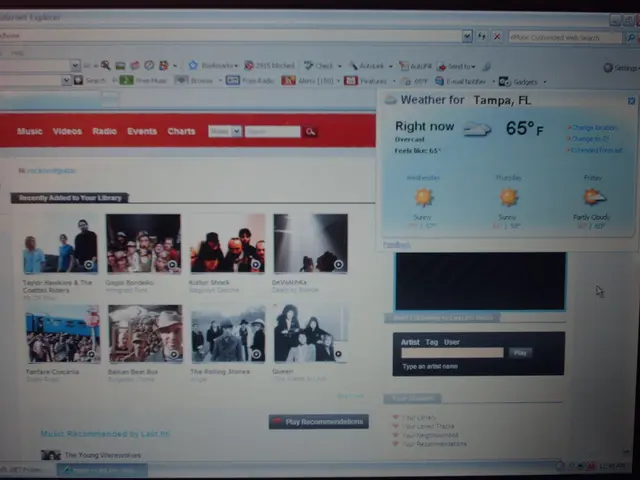Unveiling the $100 Genome: Reaching the Horizon?
Revolutionizing Genome Sequencing: Illumina's Dominance and the Fall of Costs
The world of genome sequencing has undergone a dramatic transformation over the past two decades, with costs plummeting from billions of dollars to less than $1,000. This remarkable evolution can be largely attributed to Illumina, a company that has consistently pushed the boundaries of sequencing technology.
In the early 2000s, the Human Genome Project, though groundbreaking, cost a staggering $2.7 billion to sequence a fraction of the human genome. Fast forward to the mid-2020s, and Illumina claims it can achieve whole genome sequencing for as little as $200.
This significant cost reduction is a result of Illumina's continuous innovation in sequencing technology. Key milestones include the introduction of the HiSeq X Ten system in 2014, which slashed costs substantially and increased throughput, and the NovaSeq 6000 series in 2017, capable of sequencing up to 48 whole human genomes at once for about $375 in sequencing reagent cost alone.
Illumina's dominance in the sequencing market is not accidental. The company's ability to launch advanced, efficient machines capable of generating vast amounts of sequence data at reduced costs, combined with its early leadership and broad adoption in clinical and research markets, has secured its position.
Despite competition from other players like Thermo Fisher Scientific, Illumina has maintained its dominance by consistently rolling out machines with higher throughput, better efficiencies, and supporting a wide range of applications including personalized medicine and cancer genomics.
Market analyses show Illumina remains a key company profiled in the next-generation sequencing space, supported by growth in personalized medicine and precision oncology that rely on comprehensive genome sequencing.
Meanwhile, new players such as biotech startup Ultima Genomics, which publicly launched their sequencing technology in 2024, are making waves in the industry. Ultima Genomics' UG100 platform deploys a chemical process that promises to be cheaper than competitors, potentially challenging Illumina's market dominance.
Recent data shows that the sequencing performance from the UG100 was 'very similar' to Illumina sequencing for a single-cell sequencing experiment. This could pave the way for more ubiquitous use of whole genome sequencing in the clinic.
As the cost of genome sequencing continues to fall, there have been calls for newborn sequencing at birth to test for rare diseases and create a better health record throughout life. The National Human Genome Research Institute tracks the cost of sequencing at all centres they fund, providing valuable insights into the decreasing cost of sequencing over time.
Figures 1 and 2, sourced from the National Human Genome Research Institute, show the decreasing cost of sequencing over time, compared to what would be predicted by Moore's Law. These advances could lead to a future where genome sequencing becomes as commonplace as blood tests.
In conclusion, the cost of human genome sequencing has fallen from billions to under $1,000 primarily due to Illumina’s innovations starting in the early 2010s, securing its market dominance through continuously improved, high-throughput sequencing platforms that meet growing research and clinical demands. The entry of new players in the market, such as Ultima Genomics, adds a competitive edge and promises to further drive down costs and increase accessibility.
References:
- 1000 Genomes Project
- Illumina's HiSeq X Ten system
- Illumina's NovaSeq 6000 series
- Market analysis of Illumina in the next-generation sequencing space
- Ultima Genomics' UG100 platform
- Illumina's breakthroughs in sequencing technology, such as the HiSeq X Ten system and NovaSeq 6000 series, have drastically decreased the cost of genome sequencing, making it less than $1,000.
- As a result, Illumina dominates the genome sequencing market with its innovative, high-throughput machines that generate massive sequencing data at reduced costs.
- These advancements have been integral to the application of genome sequencing in various fields, including personalized medicine and cancer genomics.
- However, the emergence of new players in the biotech industry, like Ultima Genomics, presents competition, with their UG100 platform promising cheaper costs and potentially challenging Illumina's hegemony.
- The performance of the UG100 platform has been found to be 'very similar' to Illumina sequencing for a single-cell sequencing experiment, and it could open doors for more widespread use of whole genome sequencing in clinical settings.
- The decline in genome sequencing costs has spurred debates over newborn sequencing at birth to identify rare diseases and ensure a lifelong health record, with the National Human Genome Research Institute tracking these costs for centres it funds.




